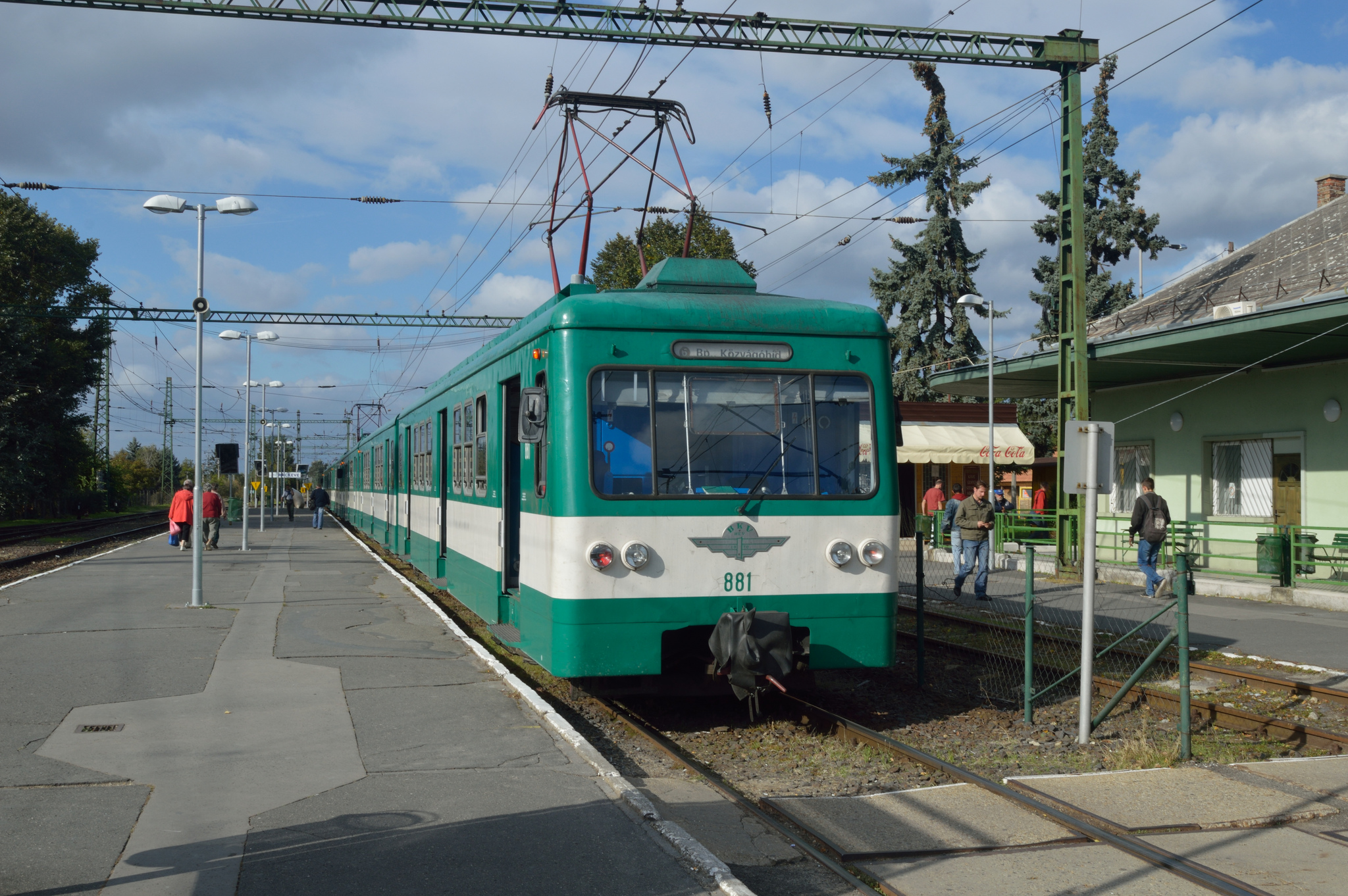Budapest’s HÉV train celebrates its 130th anniversary this year. Helyiérdekű Vasút, the Railway of Local Interest, began serving outlying populations in 1887. Tourists use it too, many traveling up to Szentendre by this swift, reliable resource, perhaps not realizing other swift, reliable HÉV trains head to equally picturesque destinations. These include the palatial Habsburg retreat of Gödöllő and the former Serbian settlement of Ráckeve. In all, five HÉV lines run from Budapest, offering a hassle-free day out for the price of a standard transport ticket – plus a supplement if you’re leaving the city limits.
HÉV 5: Batthyány tér/Margit híd-Szentendre

Crossing the M2 red metro line at Batthyány tér and the number 4-6 tram line on the Buda side of Margaret Bridge, this most frequented of HÉV trains echoes the earliest days of suburban expansion.
Opened in August 1888, this line even predates the HÉV acronym – the Budapest Railway Railroad Company (BKVT) responsible for these rapidly needed surburban routes, unable to find agreement with its horse-drawn counterpart, created a HÉV forerunner as a subsidiary.

Today this busy train scoots up to Szentendre in 40 minutes, Batthyány tér a blur of transit-changing commuters during rush hour. Services otherwise run at more leisurely 20-minute intervals, allowing sightseers to enjoy the visual companionship of the passing Danube before exploring the cobblestoned streets and Serbian churches of Szentendre.
In August, Sziget visitors pack the carriages to Filatorigát by the music festival site, the scheduled 4:30am train back to Budapest awash with post-party flotsam rubbing shoulders with bleary shift-workers.
HÉV 6: Közvágóhíd-Ráckeve

Inaugurated in 1887, the HÉV train to Ráckeve runs for a full 40 kilometers before it reaches its final destination, a former Serbian settlement that straddles a bucolic branch of the Danube. Here at the far south of Csepel Island, fishermen gather on lazy riverbanks and gaggles of rowers glide by.
It’s all timeless stuff, a world away from the HÉV terminus in town, beside a busy traffic hub in south Pest facing the millennial arts complex. Conveniently, though, Közvágóhíd is also the end station for Budapest’s celebrated number 2 tram that serves the Pest embankment.
The HÉV keeps parallel watch on Csepel Island as it heads south on the Pest side, passing the city limits after Millenniumtelep and over the M0 orbital motorway. After Dunaharaszti, you cross onto Csepel, first settled by the original Hungarian tribe and named after the horse groom of their leader, Árpád.
Once you reach Ráckeve, all is explained at the modest Árpád Museum (closed Mondays) at Kossuth Lajos utca 34. Other attractions include a clutch of Serbian Orthodox churches, the Baroque Savoy Castle of military hero Prince Eugene, and Aqualand thermal spa, pool and lido.
HÉV 7: Boráros tér-Csepel

A joy for fans of industrial architecture, Csepel is off the beaten track as far as mainstream tourism is concerned. From Boráros tér, crossing point of tram numbers 2, 4 and 6 on the Pest side of Petőfi Bridge, the frequent HÉV train takes ten minutes to reach the heart of District XXI, part of Budapest since 1950 yet an island community separated by geography and social history.
Domain of the pioneering Árpád tribe, Csepel was chosen by the Weiss brothers in the late 1800s as the location for their armaments factory. After World War I, the focus fell on transportation. By the 1930s, the factory had more than 15,000 employees.
Nationalized after the socialist takeover, ‘Red Csepel’ became a model workers’ paradise, a sprawling complex incorporating a nursery, shops, social entertainment and, of course, rows and rows and rows of workshops and production lines.

Today you’ll still find the main gates of the Csepel Works (‘Csepel Művek’, signposted above in authentic retro blue neon) by the Szent Imre tér HÉV stop, providing access to a strange lost world of neglected warehouses, lonely chimneystacks and rusted piping.
Part of the complex is still in use, manufacturing the gleaming Bubi bikes lined up for public hire in prominent spots around Budapest – and as occasional host of a crazy themed escape game devised by the team at Rent A Trabant tours.
HÉV 8/9: Örs vezer tere-Gödöllő/Csömör

Perhaps the most surprising realization for those unfamiliar with the HÉV network is that it goes all the way to Gödöllő. Seasonal retreat of the Habsburgs, Gödöllő is a 26-hectare nature park centerpieced by the largest Baroque mansion in Hungary.
It’s a far cry, and 45 minutes, from drab Örs vezer tere, terminus of the M2 red metro line. Setting off every half-hour, trains first reach Cinkota, where HÉV line 9 splits off for Csömör.
Line 8 continues to Mogyoród, site of the Hungaroring Formula 1 racetrack and its year-round family-friendly events. Ten minutes and you’re at Szabadság tér in Gödöllő, closest stop to the Royal Palace.
Built by Count Antal Grassalkovich, confidant of Habsburg Empress Maria Theresa, this vast Baroque pile passed to the Hungarian state, which in turn gifted it to Emperor Franz Josef and Queen Elisabeth after the coronation of 1867.

Revered by Hungarians, Magyar-speaking Elisabeth, Sisi to all, would escape for months at a time here from Vienna, inviting Gypsy bands and staging Christmas parties.
This era is now reflected in the Royal Suites, occupying 14 of the 31 galleries. Costumed events are staged at yuletide, with concerts throughout the year. The beautiful gardens switch to winter closing times of 6pm after November 1st.
HÉV line 9 via Cinkota runs to the age-old village of Csömör ten minutes away.
Just over the Budapest boundary, Csömör has been settled since the Stone Age. Celts, Romans, Avars and Turks have also called it home – though the local Village Museum at Vörösmarty utca deals more with local peasant traditions. These days there’s more to Csömör than rural survival. Just as in the 1880s, expansion out of Budapest has caused a need for improved transport infrastructure, this time in the shape of the M0 ring road that passes alongside it.




